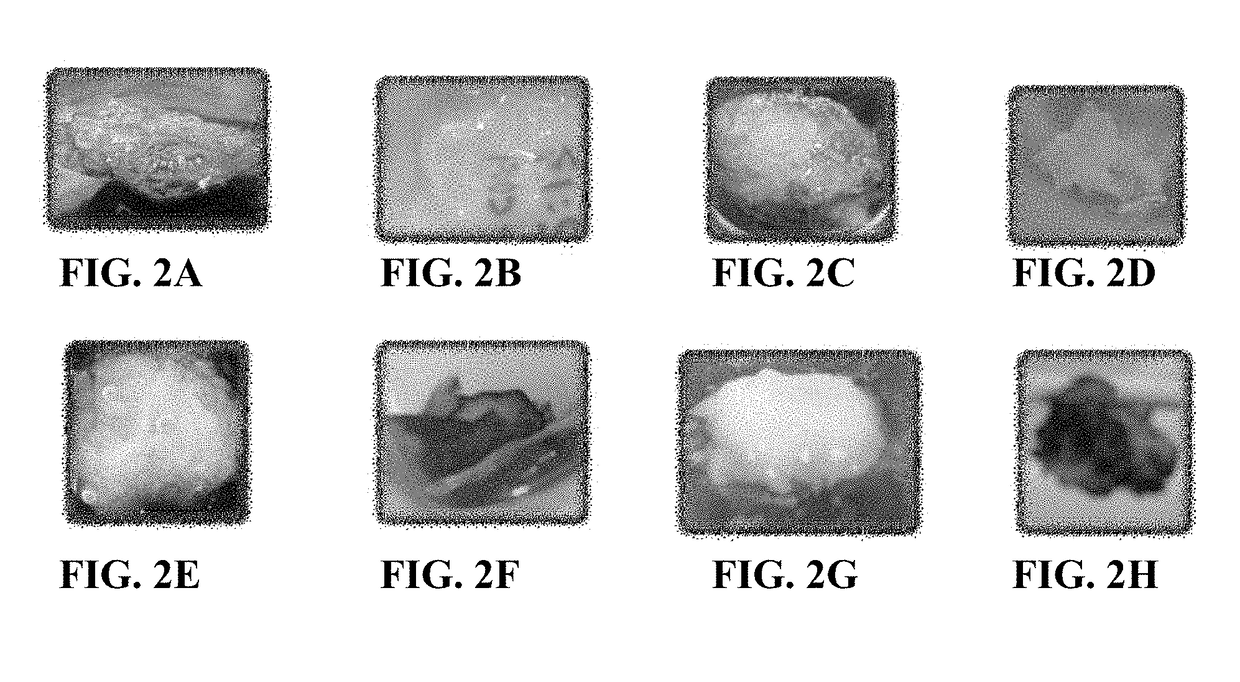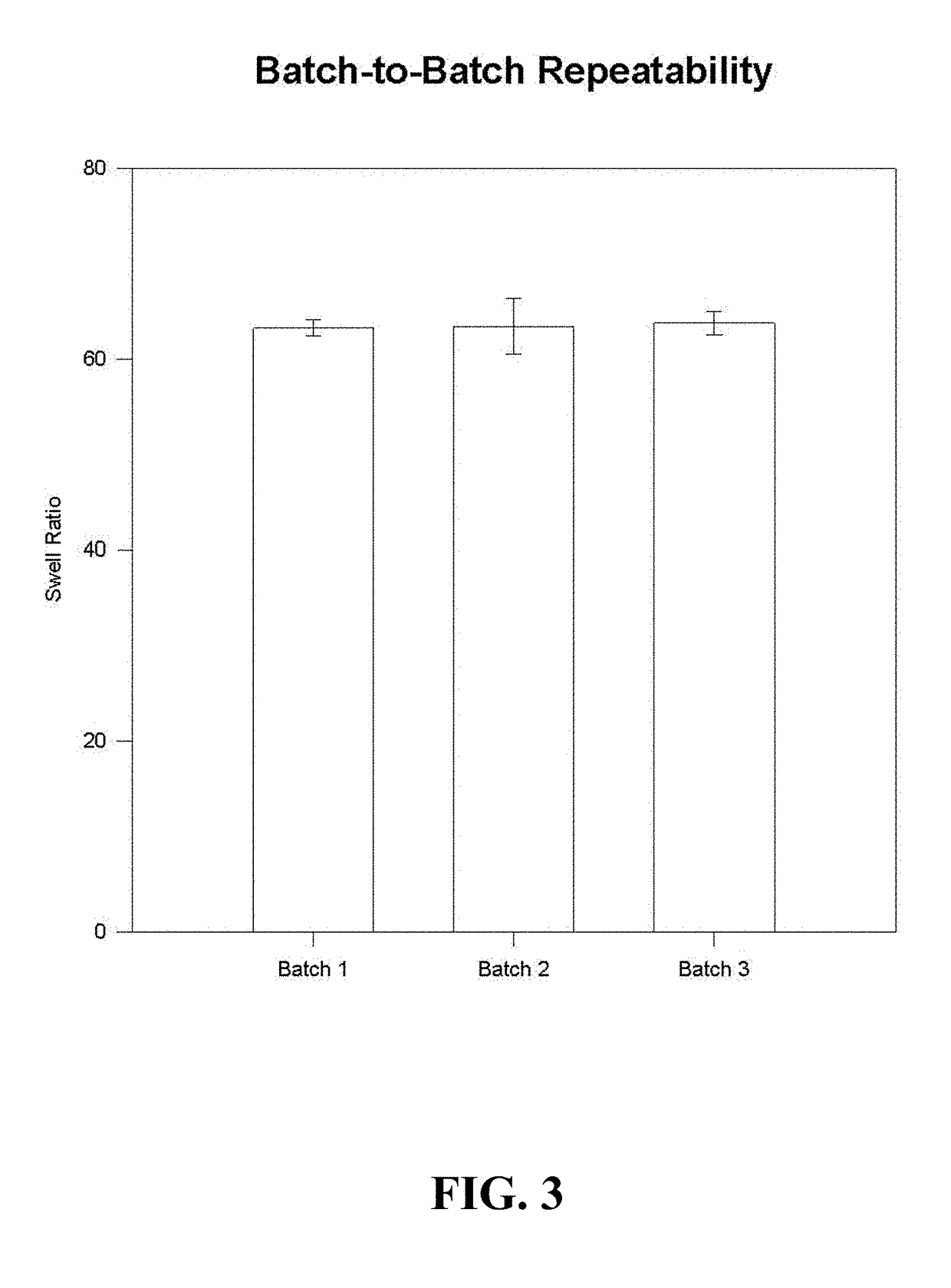Polymeric materials including a glycosaminoglycan networked with a polyolefin-containing polymer
a glycosaminoglycan and polyolefin-containing polymer technology, applied in the direction of prosthesis, bandages, organic active ingredients, etc., can solve the problems of insufficient mechanical properties of commercially available crosslinked ha hydrogels, and the inability to meet the requirements of many load-bearing biomedical applications, so as to improve the network characteristics, maintain the mechanical integrity of swelling, and improve the effect of network characteristics
- Summary
- Abstract
- Description
- Claims
- Application Information
AI Technical Summary
Benefits of technology
Problems solved by technology
Method used
Image
Examples
example 1
Synthesis of HA-CTA-co-HDPE and its Hydrolysis to Yield HA-co-HDPE
[0104]This example corresponds to Example 1 of PCT / US2008 / 005054 (discussed herein above). This example discusses the synthesis of HA-CTA-co-HDPE and its hydrolysis to yield HA-co-HDPE (reaction conditions given for 98 and 85% HA HA-CTA-co-HDPE with HA molecular weight of 1.5 MDa, and 0.3% MA (graft percent) MA-g-HDPE wherein the HDPE has a molecular weight of 121.5 kg / mol).
[0105]Complexation methods for sodium HA with CTAB are known. See, by way of further example: Zhang, M. and James, S. P.: Novel Hyaluronan Esters for Biomedical Applications, Rocky Mountain Bioengineering Symposium, Biomedical Sciences Instrumentation 238, 2004; Zhang, M. and James, S. P.: Silylation of hyaluronan to improve hydrophobicity and reactivity for improved processing and derivatization, Polymer 46:3639, 2005; and Zhang, M. and James, S. P.: Synthesis and properties of melt-processable hyaluronan esters, Journal of Materials Science: Mate...
example 2
HA-co-PEMA Hydrogel Synthesis
[0125]One embodiment of the HA-co-PEMA hydrogel of the present invention was synthesized according to the protocol presented below.
[0126]Determine the dry weight of reactants (HA-CTA and PEMA) for the desired formulation based upon the reactant weight ratio (see Table 2).
TABLE 2Copolymer Formulation Weight RatiosReactantInternalWeight RatioNomenclatureHA-CTA:PEMA99:1 CoPEMA36:1 95:5 CoPEMA7:185:15 CoPEMA2:170:30 CoPEMA4:55:95 CoPEMA 1:20
[0127]For example, approximately 1 g of a 95:5 gel formulation (unhydrolyzed) will require ⅞ g HA-CTA and ⅛ g PEMA.
[0128]Weigh a slight excess of reactants (to allow for weight loss due to the evaporation of water) and place into separate labeled containers. Vacuum dry reactants at 50° C. and −25 inches Hg for a minimum of 24 hours. Place glassware to be used for the reaction in a 100° C. oven. Note: Exposure to water will hydrolyze the maleic anhydride and reduce the reactivity of the PEMA. Vacuum drying will close the a...
example 3
Tripolymer Hydrogel Synthesis
[0131]Calculate the dry weight of reactants (HA-CTA, PEMA, and PE-g-MA) for the desired formulation based upon the reactant weight ratio (see Table 3):
TABLE 3Copolymer Formulation VariationsReactantInternalWeight RatioNomenclatureHA-CTA:PEMA85:10:5 Tripoly27.2:8.7:1*70:15:15 Tripoly 7.5:4.4:1*
[0132]Weigh a slight excess of reactants (to allow for weight loss due to the evaporation of water) and place into separate labeled containers. Vacuum dry reactants at 50° C. and −25 inches Hg for a minimum of 24 hours. Place glassware to be used for the reaction in a 100° C. oven. Note: Exposure to water will hydrolyze the maleic anhydride and reduce the reactivity of the PEMA. Vacuum drying will close the anhydride rings and reactivate the MA functional groups.
[0133]Copolymerization Reaction: Place HA-CTA in 500 ml RBF along with an appropriate stir bar. Spread vacuum grease on two rubber serum stoppers and place stoppers in side necks of the flask. Secure stopper...
PUM
| Property | Measurement | Unit |
|---|---|---|
| frequency | aaaaa | aaaaa |
| molecular weight | aaaaa | aaaaa |
| polymeric | aaaaa | aaaaa |
Abstract
Description
Claims
Application Information
 Login to View More
Login to View More - R&D
- Intellectual Property
- Life Sciences
- Materials
- Tech Scout
- Unparalleled Data Quality
- Higher Quality Content
- 60% Fewer Hallucinations
Browse by: Latest US Patents, China's latest patents, Technical Efficacy Thesaurus, Application Domain, Technology Topic, Popular Technical Reports.
© 2025 PatSnap. All rights reserved.Legal|Privacy policy|Modern Slavery Act Transparency Statement|Sitemap|About US| Contact US: help@patsnap.com



